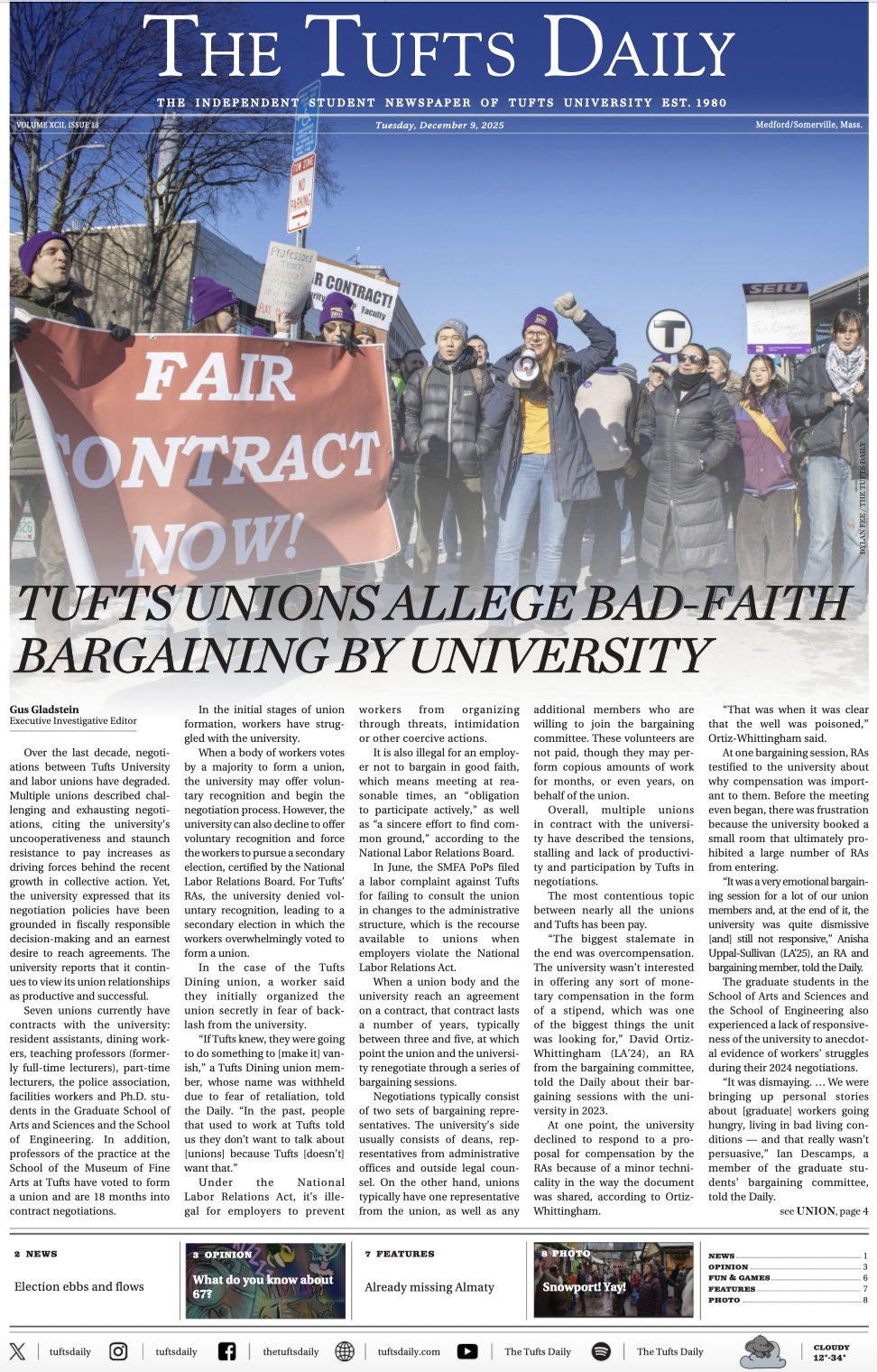Last night photographer James Nachtwey, recipient of the Dr. Jean Mayer Global Citizenship award sponsored by EPIIC, was present for a showing of the film War Photographer, a chronicle of several of his journeys into the worst turmoil in the world.
The documentary, made by Christian Frei, follows Nachtwey as he travels to some of the bleakest parts of the world, including Kosovo, Indonesia and the West Bank during some of those areas' most trying times. The film is interspersed with Nachtway's images, both in color and in black and white taken from these and some of the many other locations he has visited.
Nachtwey has earned a reputation for his ability to get close to the action. "When it becomes up close and personal, that's Jim," one of his colleagues says in the film.
The camera stays close behind Nachtway as he dodges bullets and shrapnel, shields his eyes from tear gas, and struggles to make his way through noxious clouds of smoke at a sulfur mine.
"Fear is not what's important. It's not a matter of whether you fear it _ it's how you manage it," says Nachtwey of the dangers he encounters.
Yet, he feels the pictures he brings back are worth the danger _ and they are astounding. Anyone who does not believe a picture is worth a 1000 words has not seen a Nachtwey print. They are as shocking, heartbreaking and gut-wrenching as anything I have ever seen. His lens has captures the worst anguish of humanity: a man, nothing more than bone crawls on the ground because he lacks the strength to stand; a malnourished boy searches for his parents with fear in his eyes as rubble smolders in the background; a women with one arm struggles to wash the rags which are the only things she has to clothe her son.
Watching the film, there was something deeply frustrating about sitting, well fed, in a comfortable auditorium that is part of an institution that costs tens of thousands of dollars to attend, watching people who have absolutely nothing, who are trapped in misery with death lurking and where hope seems much too far off.
But Nachtwey does not want us to feel guilty. Rather he hopes to "give a sense of perspective" so that we remain grateful for the "material things and institutions that allow us to pursue our own "drives," a quality that he says is "something rare" in the world.
Nachtwey himself must grapple everyday with his profession, which revolves around others' misfortunes. He is constantly haunted by the tragedies he has witnessed and must reconcile the fact that he can always walk away from them. When Nachtwey speaks, you can hear the compassion in his voice, the sorrow for what he has seen, and the frustration that he cannot to do enough to better the world. He hardly smiles, shocked from a lifetime of having had to combat strong emotions.
Nachtwey's work is not anything close to being art _ at least in the conventional sense. It is not pretty, it is not abstract and it is not meant to be hung on walls. What it is is an extremely powerful form of communication, which allows him to sleep better at night.
At the end of the film Nachtwey says somberly, "If everyone could be there to see the fear [and the horrors of the inhumanity I have witnessed] just once, they would see nothing is worth it." Unfortunately, not many people will witness these events firsthand to fully understand what he means, but Nachtwey's images are powerful enough communicators that they have helped raise awareness and bring about compassion to those who view them.
According to Nachtwey, war is an attempt to negate humanity. He sees his photographs as the opposite of war, and it is his lifelong mission to use photographs to bring about an end to war. Upon accepting his award, he urged students to apply their "intelligence and ambition" to his cause.
If you are interested in seeing Nachtwey and hearing him speak, he will be visiting again at the end of February as part of the EPIIC colloquium, which features various lectures on EPIIC's year long topic of Sovereignty and Intervention.
More from The Tufts Daily





